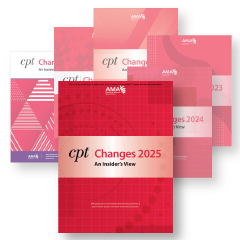by Christine Woolstenhulme, QMC QCC CMCS CPC CMRS
Oct 28th, 2021
The decision regarding the most appropriate care setting for a given surgical procedure is determined by the physician based on the patient's individual clinical needs and preferences. Of course, there is a difference in reimbursement, and the billing depends on where the procedure took place, such as an office setting, inpatient hospital, ambulatory surgery center (ASC), or an ambulatory payment classification (APC) facility (outpatient hospital). While the procedure may be the same, it is the setting that determines reimbursement.
In addition, ambulatory payment classifications (APCs) may determine where you perform certain procedures along with reimbursement.
APCs are the equivalent of DRGs for inpatient procedures; DRGs are based on ICD-10, while APCs are based on CPT and HCPCS codes used in an outpatient hospital setting. The ASC list comprises procedures that do not post a significant risk to the patient and are not expected to require close monitoring following the procedure or an overnight stay.
If the procedure poses a higher risk to the patient, the procedure may be as classified as "inpatient only," and therefore, will not be paid in an ASC or APC setting. Inpatient-only procedures are assigned a "C" status indicator, indicating that those procedures will be reimbursed on an inpatient-only basis.
ASC, APC, and hospital settings are defined using a place of service code on the CMS-1500 medical billing claim form.
21 Inpatient Hospital
24 Ambulatory Surgical Center
22 On Campus-Outpatient Hospital
CMS provides information on how each code will be processed using ASC Payment indicators and APC status indicators.
ASC Payment Indicators
ASC has assigned a payment indicator to each code; for example, CPT code 22100 has an ASC payment indicator of G2- Non-office-based surgical procedure added in CY 2008 or later; payment based on OPPS relative payment weight.
APC Status Indicators
Status indicators are assigned to each code identifying whether the service is paid under OPPS and if it is packaged. Under the same procedure CPT code 22100, APC has assigned a Status indicator of J1-"Hospital Part B services paid through a comprehensive APC".
This information can be found on the code information page.
In addition, other important information can be found on the additional code information page, such as global days, MUEs, and certain modifiers applicable to the code. These come from the Medicare Physician Fee Schedule (MPFS) indicators.
Status Indicators are the key to Understanding Reimbursement
Let's take a look at a few essential status indicators that may cause some confusion.
| Status Indicator J1 | Hospital Part B services are paid through a comprehensive APC | "Paid under OPPS; all covered Part B services on the claim are packaged with the primary "J1" service for the claim, except services with OPPS Status Indicator "F", "G", "H", "L" and "U"; ambulance services; diagnostic and screening mammography; rehabilitation therapy services; new technology services, self-administered drugs; all preventive services; and certain Part B inpatient services." |
| What this means | The J1 indicator can be viewed similarly to the Inpatient DRG, meaning one payment covers all services provided in that encounter; in other words, all services are packaged into one. If you bill more than one service, only one will be paid. | |
| Status Indicator N | Items and Services Packaged into APC Rates | "Paid under OPPS; payment is packaged into payment for other services. Therefore, there is no separate APC payment." |
| What this means | There is no additional payment due to reimbursement being packaged into another service. | |
| Status Indicator C | Inpatient Procedures | "Not paid under OPPS. Admit patient. Bill as an inpatient." |
| What this means | This is an inpatient-only procedure and is not reimbursed in an outpatient setting. | |
| Status Indicator T | Procedure or Service, Multiple Procedure Reduction Applies | "Paid under OPPS; separate APC payment." |
| What this means | When multiple codes are reported with a "T", the highest payment rate is paid at 100%; additional procedures are paid at 50% of the calculated reimbursement. | |
| Status Indicator M | Items and services not billable to the FI or MAC | Not paid under OPPS. |
| What this means | This service is not billable/payable to the fiscal intermediary or DME regional carrier not a covered service with Medicare. | |
A complete list of OPPS Payment Status indicators from Noridian and CMS Addendum A and Addendum B Updates updates can be found here.
References/Resources
About Christine Woolstenhulme, QMC QCC CMCS CPC CMRS
Christine Woolstenhulme, CPC, QCC, CMCS, CMRS, is a Certified coder and Medical Biller with 30 years of experience in the healthcare industry.


 Quick, Current, Complete - www.findacode.com
Quick, Current, Complete - www.findacode.com